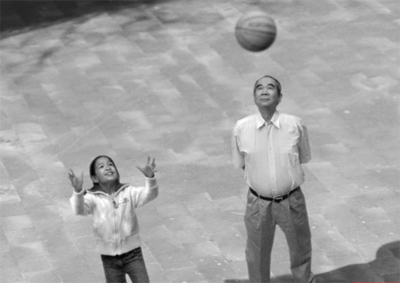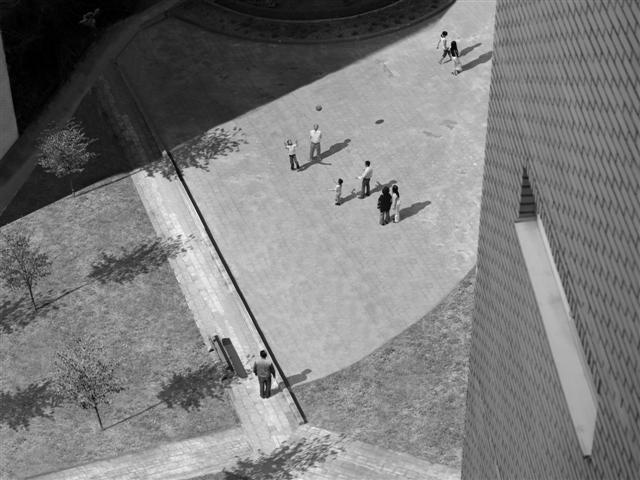Claerbout, David - VM - Reinier Sonneveld
David Claerbout, The Matrix and Icons

How God Sees Us
by Reinier Sonneveld
An Asian family stand on a square. A child just threw a ball. The father or grandfather is watching. The sun is shining bright. Next you see the same scene from a different angle:

And then from yet another angle:

And so on for 180 times, the same moment from a different angle. And then this is repeated, over and over again.
This ball will hang in the air forever.
David Claerbout, a Belgian artist from
According to my artist wife, Marissa Rappard (www.marisarappard.nl), contemporary art will never become more religious than this. Here you see eternity. Perhaps this is how God sees us. Everything at the same time, in eternal concentration, every detail is kept and preserved in him.
Something similar happens in some modern films, e.g. in The Matrix (1997). In a number of scenes the producers have put twenty or thirty cameras in a circle around the actor. It then looks in the film as if everything almost is standing still (www.youtube.com/watch?v=WhxbYTMNMxo) and the camera is turning very rapidly around the actor.
.jpg)
Also here you can imagine that God sees history in a similar way. He can ‘zoom in’ on every detail, look at it more closely, study each and every thing from all sides.
Claerbout and The Matrix have surprisingly old predecessors: icons depict the same moment from various sides as well.

In this Russian 15th-century icon of the Annunciation the perspective is not right by western standards of one point linear perspective, when you look at that building behind the angel. You see both sides at the same time and that is impossible. This is, however, what happens in hundreds of icons.
This technique is called ‘inverse perspective’. Normally, when e.g. you draw a corridor, it will become smaller in the distance and finally the lines will converge in one point on the horizon. With icons this vanishing point is, however, located in or behind the viewers themselves. All lines run to or beyond you. What is farther away, thus becomes larger and you see a building from more than one side at the same time.
In icons various things also happen at the same time. In the same work you can see the Annunciation and Nativity. As if they are happening at once.
Some theologians think that icons in this way portray how God views history – everything at the same time. He is the vanishing point into which all lines converge. And not only, as with David Claerbout, of one single moment, but of all of history. As if it is all one moment.
Icons help teach you to see as God sees.
*******
David Claerbout: Sections of a Happy Moment, 2007. Gallery Micheline Szwajcer in
Unknown: Annunciation, 15th century. Tretyakov Gallery,
Andy and Larry Wachowski: Still from The Matrix, 1997.
David Claerbout (b. 1969,
Reinier Sonneveld (b. 1978) is a writer. He makes his living by creating short films and writing (mainly theological) books. He was the youngest writer in the Netherlands to receive the Prize for the Best Christian Book. He is also a member of the board of ArtWay.


